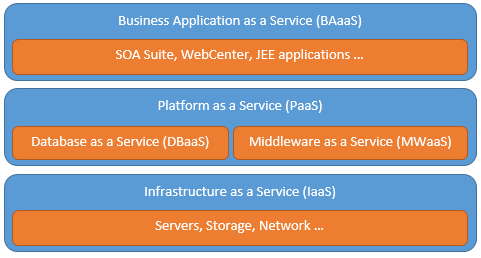
Today, I went to a session on Oracle WebLogic Server management. It was about the challenges of the application infrastructure to deliver a high quality of services in the cloud. The main goal is to optimize production and efficiency through automated management and administration. The speakers were David Cabetlus (Senior Principal Product Manager Oracle) and Glen Hawkins (Senior Director of Product Management Oracle). The session had two parts: Oracle WebLogic Server and Oracle Enterprise Manager Cloud Control 12cR3
Oracle WebLogic Server
This part focused on the WebLogic management tools for configuration, operations, and administration.
The following tools have been explained: WLST, JMX, Administration Console, REST API, and Mbean trees. WLDF has also been discussed. Let me add that WLST is specifically designed and optimized during all new version in terms of automation, standardization, and repeatability.
Do not forget the Oracle Enterprise pack for eclipse with is a specific plug-in for WLS management feature (WLST script coding, MBean Navigators and aso).
The WebLogic diagnostic framework (WLDF) features improved monitoring (logs, runtime metrics and instrumentation) and automation.
WLDF is capable of processing, capturing, exposing and retrieving information on WebLogic domains.
It includes a dashboard, watch rules, and notifications to easily diagnose WebLogic domains.
Cloud elasticity with dynamic, declaratively configured clusters was also discussed. The goal is to enable scalability for the cloud.
Unified management framework based on WLS management framework was also talked about, covering the management of the application server (WebLogic) and the data grid infrastructure (Coherence).
An other improvement is the Maven integration, which enables automation and production for building and developing WebLogic applications with a remote repository (jar and poms).
Oracle Enterprise Manager Cloud Control 12cR3
The full title of the presentation was “Taking to the next level with Oracle Enterprise Manager Cloud Control 12cR3”.
It focused on the following innovations:
- Complete cloud life cycle management
- Integrated cloud stack management
- Business Driven application management
The complete cloud life cycle management describes the cycle plan to optimize passing through the setup, building, testing, deploying, monitoring, managing (meter & charge) of the Oracle Cloud stack. It’s now completely managed by Oracle Enterprise Manager.
Oracle Cloud Stack

Integrated cloud stack management
Here is a summary of the innovations concerning OEM “Total Cloud Control” 12cR3:
- Performance monitoring for availability and performance issues with the following features
– Visibility across the cloud stack
– Real time & hierarchical monitoring
– rectify automatically problem via already implemented WLST scripts.
- Diagnose JVM for WebLogic and Java applications
– Complete visibility of the JVM stack
– Heap and threads, identify ECID in running thread
– Already deployed on production with no restart needed
– Middleware diagnostic advisor
– Root cause analysis (evaluate and provide guided help)
– Diagnose JMS, JDBC properties aso
- Patching and provisioning
– Reduce effort, time and eliminate error
– automation and tracking
– Pre-validation
Oracle Enterprise Management is also designed to manage all Cloud Application Foundation products.
Business driven application management
Features have been added to manage Business Applications provided by Oracle, such as SOA, Webcenter, and User Experience Management from a business perspective (SLA, status, infra health). All business transactions (BT) are now tracked to monitor the user frequency usage. Middleware and Database request and diagnostic are also tracked for these business application.
After this session, I begin to understand why they are calling it OEM “Total Cloud Control”.
![Thumbnail [60x60]](https://www.dbi-services.com/blog/wp-content/uploads/2022/08/ABE_web-min-scaled.jpg)
![Thumbnail [90x90]](https://www.dbi-services.com/blog/wp-content/uploads/2022/08/STH_web-min-scaled.jpg)